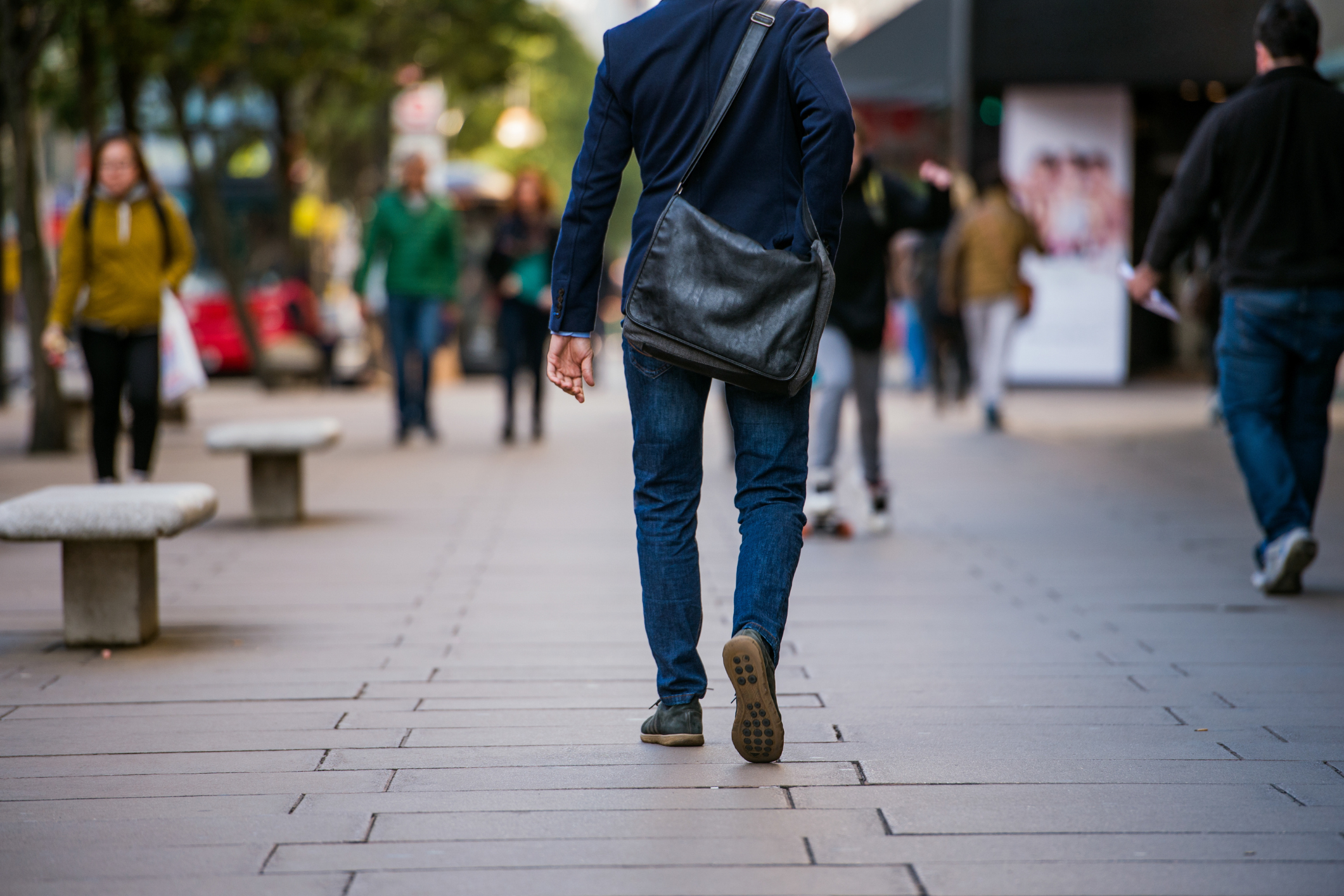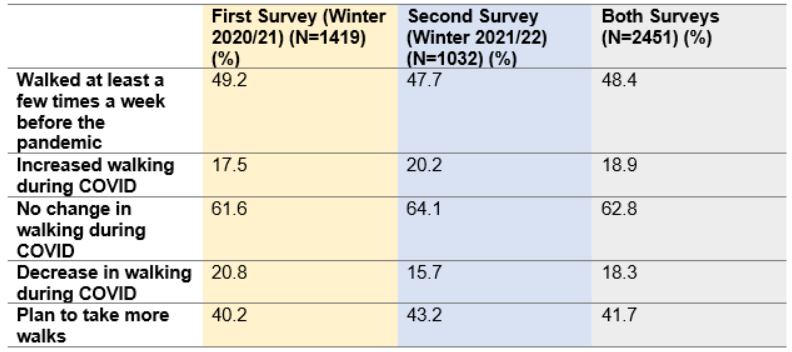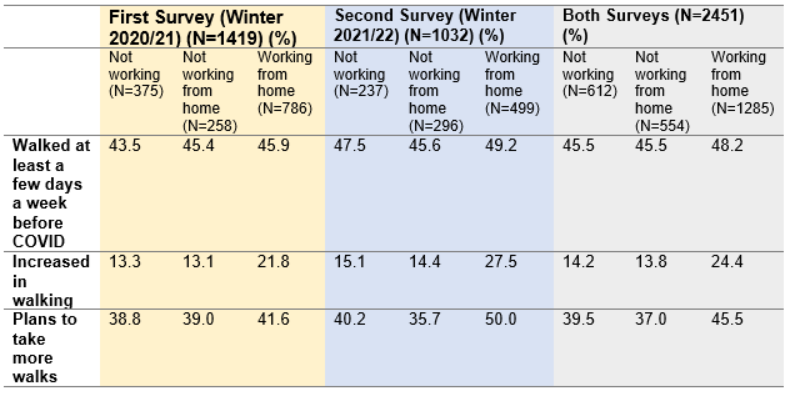By Robert B. Noland, Hannah Younes, Leigh Ann Von Hagen, James Sinclair
During the early stages of the COVID-19 pandemic when non-essential businesses were closed and entertainment options were limited, one could observe a noticeable increase in walking activity. Many cities and towns created extra space for people to walk and practice social distancing from others. We examined reported walking behavior by conducting a representative survey of New Jersey residents (via a Qualtrics online panel). Data was collected during winter 2020/21 and winter 2021/22, the two winter peaks of the pandemic.
Before the pandemic, about 50% of our survey respondents reported going on walks at least a few times a week. Around 19% of survey respondents increased walking behavior during the pandemic, 63% made no change, and 18% decreased walking behavior. Around 42% reported that they plan to go on more walks after the pandemic subsides (see Table 1). These results were relatively consistent across both waves of our survey.
Table 1: Walking behavior as reported in two surveys taken one year apart
Prior to the pandemic, most people would commute to a job location and most would drive. Despite driving to work, just being at a work location may have led to more walking, whether to meet with colleagues, during a lunch break, or just to walk from a parking spot to an office. A small fraction of our sample also walked to work or used public transit. As working from home has increased substantially due to the pandemic, how has this affected walking behavior? Our data allowed us to determine if people were more likely to walk more if they worked from home. We found that those who worked at home were far more likely to increase how much they walked during the pandemic; around 9 to 13 percentage points more than people who did not have a job or those who did not work at home (see Table 2).
But what did our respondents think about walking in the future? Would there be a permanent increase in walking? Results from our survey during the first winter wave of the pandemic did not show much difference in expected future walking behavior based on their work location. However, in our second survey, we found that those who work at home planned to go on more walks in the future; around 11 to 15 percentage points higher than those working at a job location. This suggests that there may be some longer-lasting changes in walking behavior.
Table 2: Walking behavior by work type
We also conducted a multivariate analysis to fully control for demographic variation. Respondents who increased their walking were more likely to work from home, be less than 50 years old, and earn at least $100,000 per year, compared to other respondents. People who planned to go on more walks in the future were more likely to be women, work from home, and have a household income of at least $50,000. We also controlled for ethnicity/race, having children at home, vehicle ownership, and population density by zip code, which we found to not be associated with changes in reported walking behavior.
It is well recognized that increased physical activity, such as walking, is good for individual’s health. While there is a lot we still have to learn about post-COVID work habits, if walking more is one of the outcomes, then policy makers should focus on making residential areas more walkable. This includes putting in sidewalks, safe street crossings, and slowing vehicle speeds and is consistent with existing state and local Complete Streets policies that address the safety of all roadway users.



